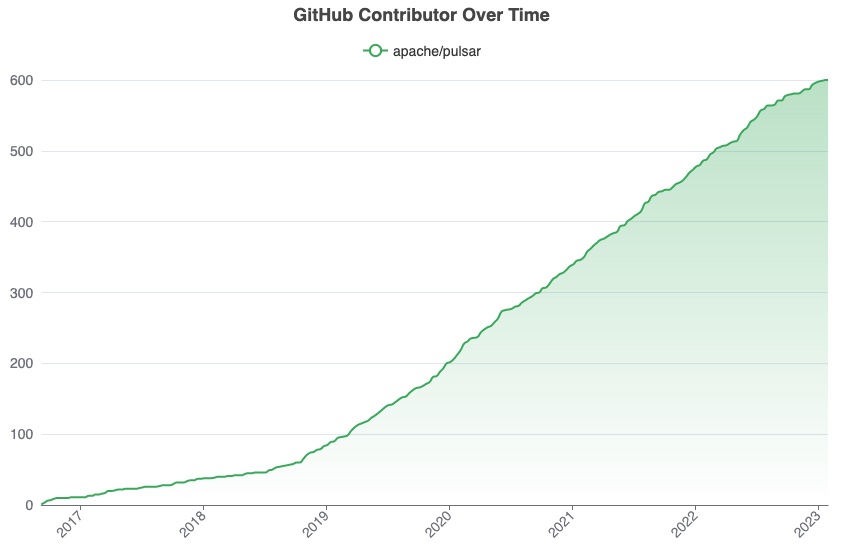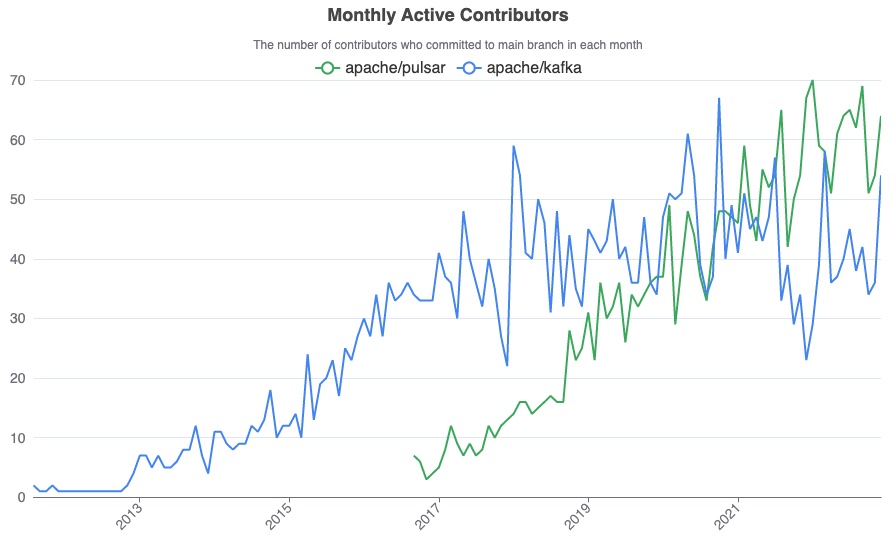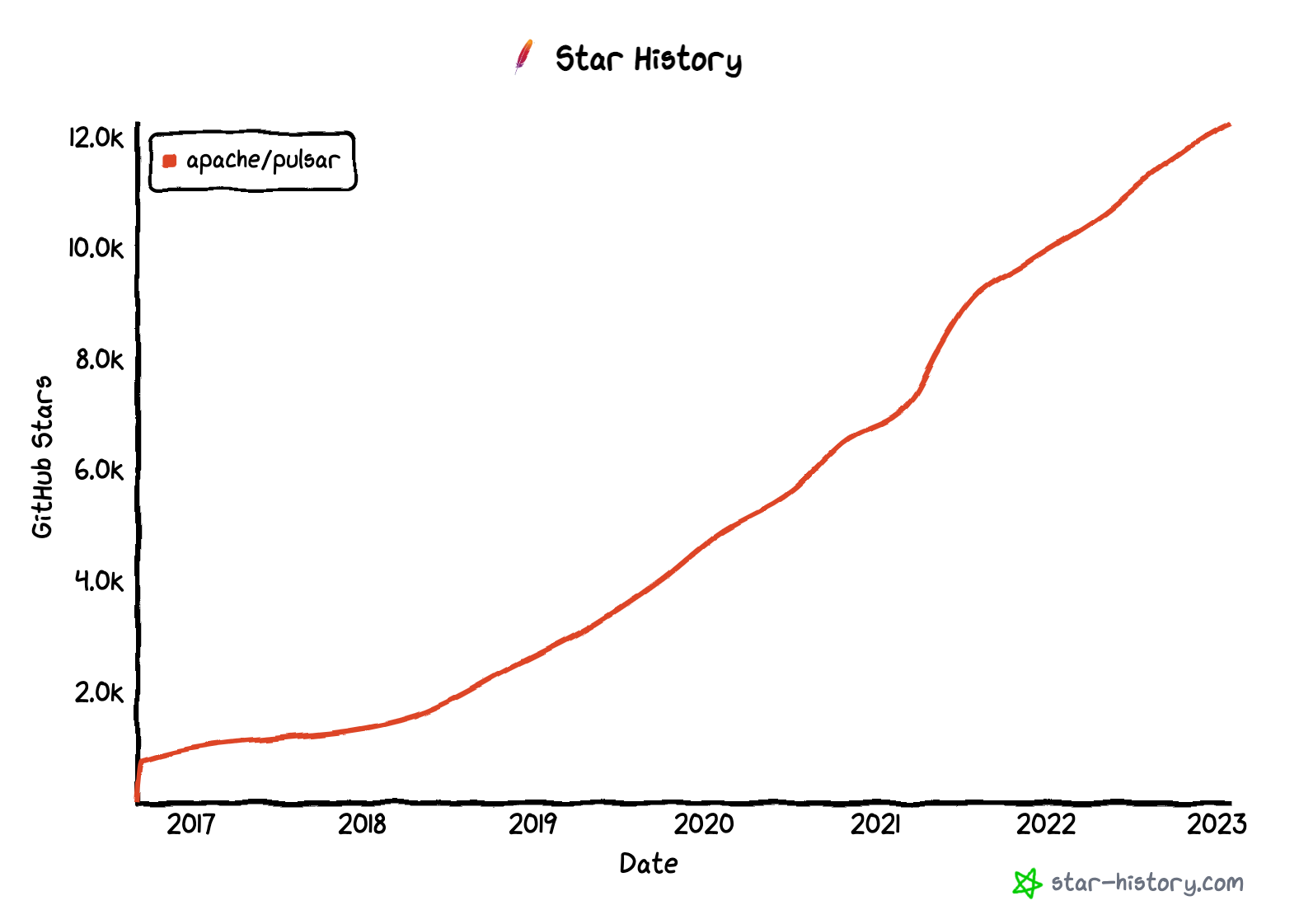
The Apache Pulsar community embraced a significant milestone last month as the project witnessed its 600th contributor to the Pulsar main GitHub repository. We would like to thank everyone in the Pulsar community who contributed to this remarkable achievement.
Since Pulsar’s graduation as a Top-Level Project (TLP) in September 2018, it has been driven by an active global community, with 160+ releases, 11K+ commits from 600 contributors, 12.2K+ stars, 3.2K+ forks, and 9600+ Slack users.
Strong community growth
600 contributors
The number of contributors is an important metric to measure the health of an open-source project. In the last year alone, we added almost 130 contributors to the project, a 28% increase from the previous year. The image below shows the number of Pulsar contributors over the past 6 years.

Monthly active contributors of Pulsar and Kafka
Both Pulsar and Kafka are popular streaming systems with contributors across the globe and are adopted by organizations spanning different industries. Although Kafka outnumbers Pulsar in the total number of contributors, the latter surpassed the former in terms of monthly active contributors about 2 years ago and has maintained a strong momentum since then.

12K+ GitHub stars
GitHub stars are another key metric for open-source projects. Figure 3 displays the star history of Pulsar since its inception.

Pulsar adoption
As the project achieves strong growth in contributors, it also sees widespread adoption by companies across industries. Their success stories speak volumes about a more stable and secure project capable of powering different use cases in the messaging and streaming space.
Pulsar has played an essential role in handling mission-critical workloads for both existing and new users. Tencent, one of the earliest companies to adopt Pulsar in production, has been consistently working to improve the project for better stability and shared their experience of handling 100 billion messages per day. New adopters include Nippon Telegraph and Telephone Corporation (NTT) Software Innovation Center, which uses a single Pulsar topic to handle 100K consumers for its IoT use case. Some organizations migrated from systems like Kafka to Pulsar, such as Sina Weibo and mParticle. They select Pulsar not just for its flexibility, scalability, high availability, and unique architecture. More importantly, Pulsar solves the problems and pain points where other systems fall short.
For more information, see this list of companies using or contributing to Pulsar and check out how different organizations are using Pulsar.
Get involved
Backed by a diverse community of contributors, we believe that each and every pull request counts and would like to see more contributors join the journey. To start making your contribution to the project, see the Apache Pulsar Contribution Guide.
To stay up to date with community news and discuss hot topics with other members, you can subscribe to the Pulsar mailing lists for users and developers, follow us on Twitter, and join the Pulsar Slack workspace.
The Pulsar community hosts events, meetups, and webinars for Pulsar users of all experience levels. You can check out the Events page and join different user groups to stay tuned.